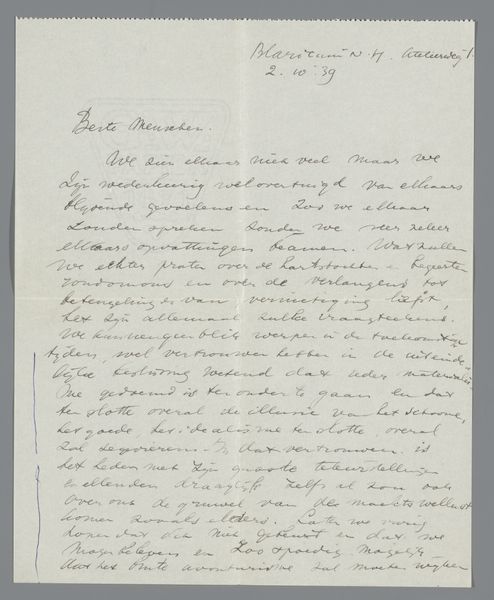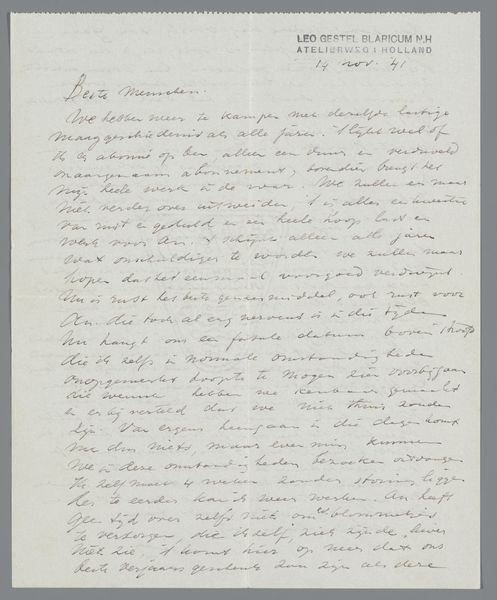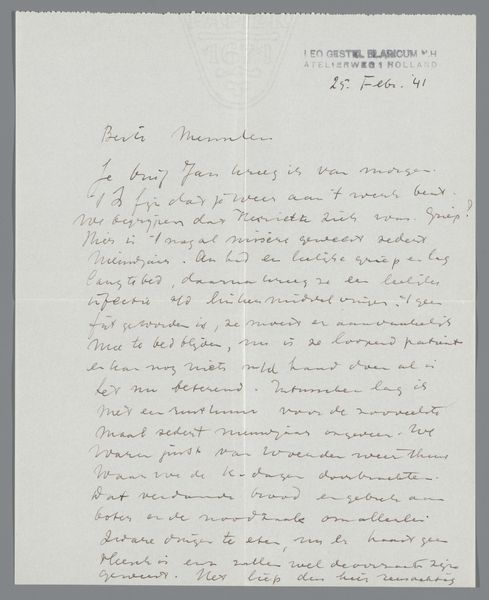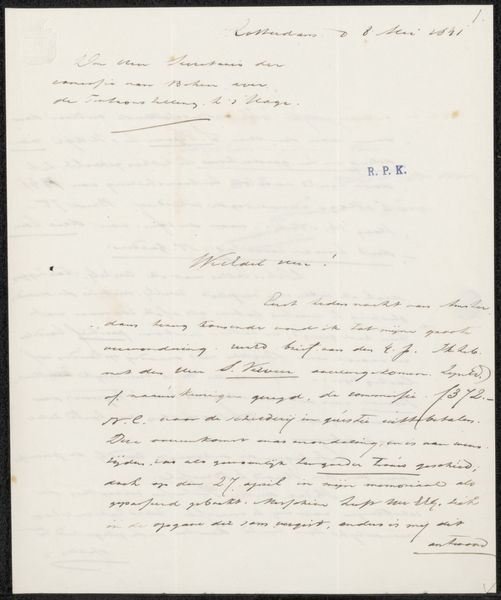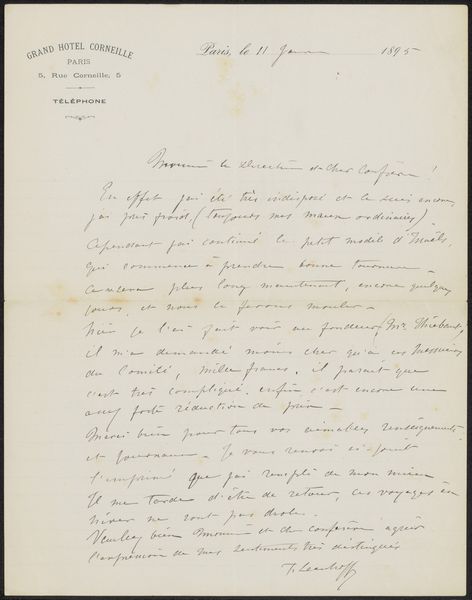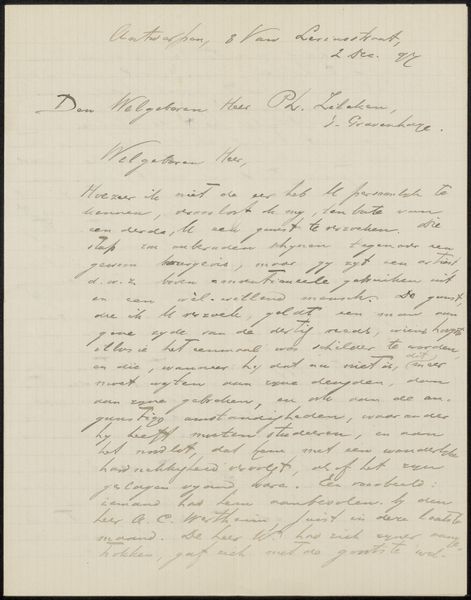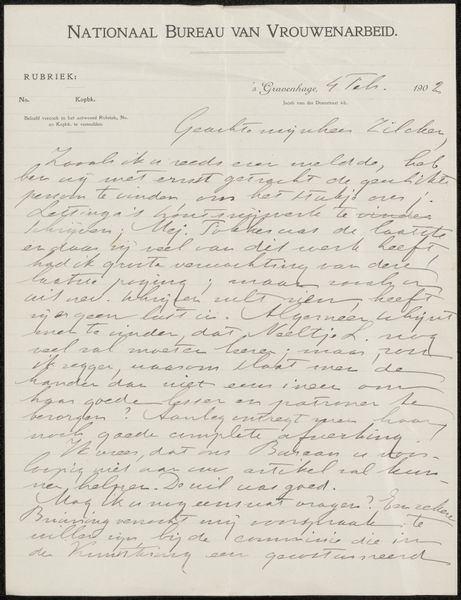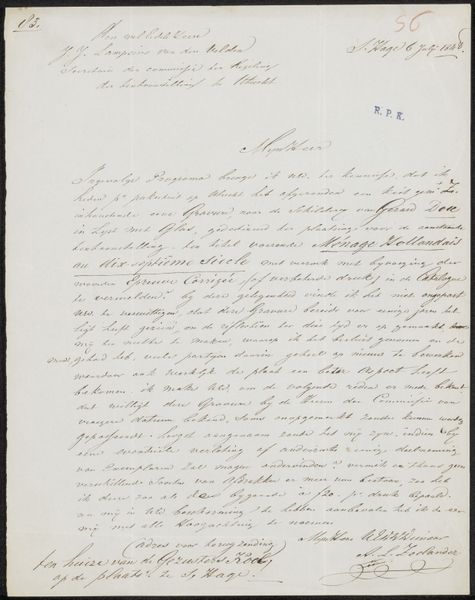
Brief aan Jan Ponstijn en Henriëtte Johanna Petronella van Hilten Possibly 1941 - 1946
0:00
0:00
drawing, paper, ink
#
drawing
#
paper
#
ink
#
calligraphy
Dimensions: height 257 mm, width 210 mm
Copyright: Rijks Museum: Open Domain
Curator: Looking at this letter by Leo Gestel, possibly written between 1941 and 1946, presently held at the Rijksmuseum, I'm immediately struck by the sheer vulnerability of it. It's just a page filled with looping handwritten text, penned in ink. Editor: Absolutely. You know, as a materialist, I'm fascinated by what an unassuming piece of paper and some ink can convey about Gestel's state of mind during, presumably, a period of immense uncertainty with the Nazi occupation of the Netherlands. The very act of writing, the physical labor involved, stands as a testament to endurance. Curator: Precisely. Notice how Gestel uses a fine ink. It's such a deliberate choice, allowing for both delicacy and a sharp contrast with the page. The negative space created between the lines of text is just as vital as the script itself, guiding the eye, forming its own rhythms on the page. The style has a clear elegance reminiscent of classic calligraphy. Editor: Indeed. I wonder about the conditions under which this letter was crafted. Was it in a cozy study, or perhaps secreted away in a humble studio amidst scarce resources? The date suggests a time of material hardship for many. How might the rationing of paper and ink have influenced its creation? And to whom was this letter to Jan Ponstijn and Henriëtte Johanna Petronella van Hilten penned, what role might they have had to provide safety? Curator: Interesting. If we see the letters as building up the composition we can see the upper-left orientation giving the letter a subtle lift. But what does it all *mean*? The structure of his phrases seem hopeful yet strained, evoking a deep and quiet sort of artistic angst as he seeks collaboration with his publishers to issue reviews to the diaspora as a means to make land available for resettlement. Editor: Considering Gestel’s ties to the art world and his struggles during that era, it brings up broader questions about artistic survival and the value of creative expression under oppression. And how artists continued creating as an act of subtle but important resistance, Curator: I leave seeing it as a window into a fragile moment captured through form, line, and language itself, expressing a deeper reality. Editor: And for me, the simple act of writing speaks volumes about resistance and resilience. A humble document speaking to power and community in times of extreme crisis.
Comments
No comments
Be the first to comment and join the conversation on the ultimate creative platform.
